|
I find it very interesting that approximately 71% of the Earth’s surface is covered in water, and the human body is composed of a similar percentage.
According to the United States Geological Survey website, we are made up mostly of water. A newborn baby is about 78 percent water, and an adult male about 60%. The brain and heart are composed of 73% water, the lungs 83%, muscles and kidneys 79%, and even the bones contain 31% water.
Did you realize that water existed even before God formed the Earth? Look at Genesis 1:1-2:
In the beginning God created the heavens and the Earth. The Earth was without form, and void; and darkness was on the face of the deep. And the Spirit of God was hovering over the face of the waters.
Water is essential to life. Every living thing depends on water for its survival. Is it any wonder that adequate, good water is the foundation of good health? But sadly, most Americans don’t drink enough water.
How Much?
So, how much good water should you be drinking every day in order to maintain that solid foundation for good health? I’m sure you’ve heard the standard answer – eight 8-ounce glasses a day. The truth is, 8 ounces is actually a cup, not a glass. So, if you follow that recommendation, you would drink eight cups of water a day, which is 64 ounces, which is one half gallon.

However, not everyone needs to drink the same amount of water. A commonly accepted method for determining how much water you should be drinking every day is to drink one ounce of water for every two pounds that you weigh. In other words, divide your weight by two, and that is the minimum number of ounces of water that you should be drinking every day.
For example, if you weigh 128 pounds, then the standard eight 8-ounce cups per day may be enough for you. But, if you weigh 256 pounds then you need to be drinking 128 ounces a day, which is a gallon. Also, keep in mind that when you perspire heavily you need to drink extra water.
Dr. Batman
I don’t know of anyone who has devoted more of his life to the study of the effects of water on human health than Dr. F. Batmanghelidj, affectionately called “Dr. Batman.” I consider him a giant in the field of water research.
Dr. Batman was an Iranian physician, born in 1931 in Tehran. He was a graduate of St. Mary’s Hospital Medical School of London University, where he studied under Sir Alexander Fleming, who had discovered penicillin at that very hospital in 1928.
In his first book, Your Body’s Many Cries for Water, published in 1992, Dr. Batman states that, “It is chronic water shortage in the body that causes most of the diseases of the human body.” He goes on to say that, “Water is the cheapest form of medicine to a dehydrated body.” And, “…a well-regulated and constantly alert attention to daily water intake will prevent the emergence of most of the major diseases we have come to fear in our modern society.”
In another of his books, Obesity, Cancer, Depression: Their Common Cause and Natural Cure, he states that, “It is safe to say that if you do not have a dehydration-produced mineral deficiency, you will not get sick. To recover from sickness, correct the dehydration and replace the lost minerals from your body.”
As I stated in the previous chapter, I do not agree with anybody about everything. While I may not agree with all of Dr. Batman’s conclusions and theories, of this one thing I am absolutely sure, beyond a shadow of a doubt: Most Americans today are either unaware of, or choose to ignore the vital role of adequate, good water in maintaining good health and a healthy weight.
I believe one of the main reasons for this is that we have too many other things available to drink. Many people assume that if they consume 64 ounces of liquid a day they have satisfied their body’s need for water. They have not. There are many liquid substances that people in our modern, affluent society drink in an attempt to satisfy their body’s many cries for water such as soft drinks, power drinks, energy drinks, protein drinks, juices and milk. And all the while more and more Americans are literally “dying of thirst.”
Let me make one thing clear: There is no drink more natural than water, nor is there any drink that hydrates the body better than good water. After all, God created water to hydrate the human body, as well as all other living things. No other drink can take the place of good, pure water to keep you hydrated.
Lose Weight with Water
In the previous chapter I told you that I was going to show you how you can easily lose a pound a week, without starving or giving up everything you love to eat. It starts right here – with water.
If you are like most Americans, the number one thing that you can do to easily and immediately improve your health and begin to gradually return to a healthy weight is this: STOP DRINKING YOUR CALORIES!
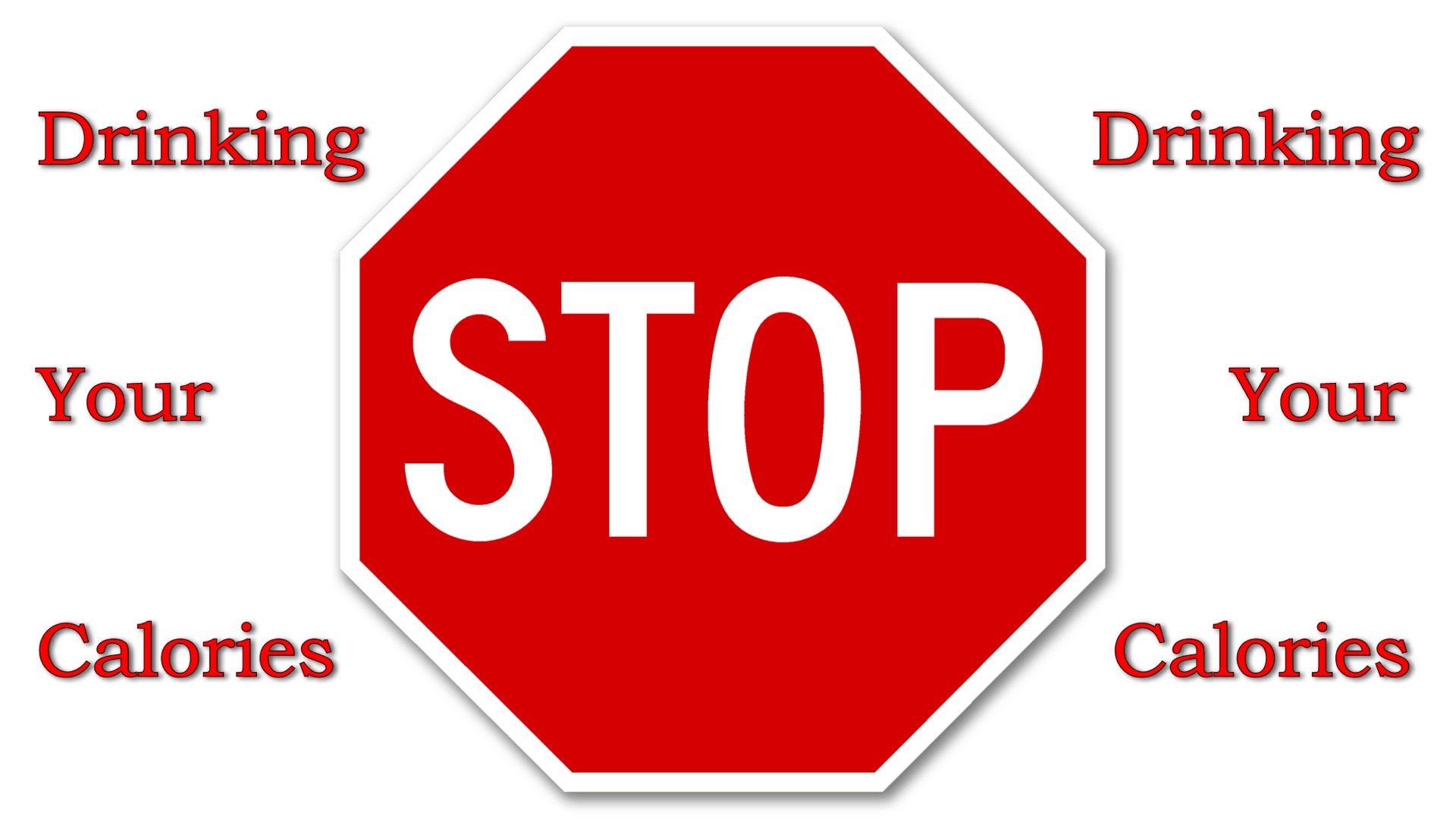
Drink water. Good, pure water has zero calories, and yet provides certain minerals that are essential to optimal health, such as calcium and magnesium. And it is the only substance on Earth that truly satisfies the body’s need to stay hydrated. In fact, all living things must have water to survive. Think about it: You wouldn’t “water” your plants with Dr. Pepper, and I hope you wouldn’t pour Red Bull in your dog’s water bowl!
I don’t usually advocate counting calories as a means to lose weight, but when it comes to drinking calories, that may actually be where a lot of your extra, unwanted pounds came from.
A Pound-a-Week
Consider this: 3,500 calories equal one pound. It doesn’t matter if you consume those extra calories over the course of a week or a year; if you take in 3,500 calories more than you burn you will gain a pound. Now, what if, without realizing it, you had started drinking an extra 100 calories a day? Every 35 days, which is just over a month, you have picked up an extra pound. That’s ten pounds in a year! Think about it: Is it possible that’s where a few of your unwanted pounds came from?
The good news is that this fact can work in your favor. Whenever you consume 3,500 calories less than you burn, you lose a pound. So the key is to take an honest assessment of what you drink, and stop drinking calories. If it turned out that you had been drinking 500 calories a day and you stopped doing that, then guess what: You would start losing a pound a week!
Say for example you love green tea, and you discovered Starbucks’ Matcha Green Tea Latte. There’s a Starbucks on your way to work, so you just zip through the drive-through every morning and get yourself a grande with 2% milk. That can’t be bad, can it? After all, it is green tea, and it contains 2% milk. But, what you may not think about is the fact that it contains 240 calories!
Or perhaps you’re addicted to their Caramel Ribbon Crunch Frappuccino®. That one weighs in at 490 calories! If that’s you, I think we’ve found your pound-a-week.
Or maybe you’re a fan of McDonald’s Hot Chocolate with its 370 calories. Or perhaps their Strawberry Shake at 500 calories. Maybe you prefer Sonic: They had the distinction of being included in the 2019 “winners” of the annual Center for Science in the Public Interest Xtreme Eating list, a yearly list of some of the unhealthiest offerings from restaurants. Their large Oreo Peanut Butter Master Shake contains 1,720 calories!
Or maybe you’re a member of the “Pepsi Generation” – you prefer to get your morning caffeine pick-me-up from a plastic bottle instead of a coffee cup. If that’s you, just remember that your 16.9 ounce bottle of Pepsi contains 210 calories. If you indulge in a second one before the day is over, that’s 420 calories.
Sugary Drinks
According to an article on the Harvard School of Public Health website entitled “Sugary Drinks,” sugar-sweetened beverages (SSBs) “…are the single largest source of calories and added sugar in the U.S. diet.” The article goes on to say that, “There is sufficient scientific evidence that decreasing sugar-sweetened beverage consumption will reduce the prevalence of obesity and obesity-related diseases.”
An article on the CDC website entitled “Get the Facts: Sugar-Sweetened Beverages and Consumption” adds this information: “Frequently drinking sugar-sweetened beverages is associated with weight gain/obesity, type 2 diabetes, heart disease, kidney diseases, non-alcoholic liver disease, tooth decay and cavities, and gout, a type of arthritis. Limiting the amount of SSB intake can help individuals maintain a healthy weight and have a healthy diet.”
“But,” you say, “I’m smart.” “I drink Coca-Cola Zero Sugar – zero calories!” Well, you’re right; no calories. But, did you happen to notice that the third ingredient, not counting carbonated water, is aspartame? I’ll tell you in a subsequent chapter why you should avoid all artificial sweeteners and aspartame in particular, but for now suffice it to say that if you want to drink something with zero calories, just drink water! And, if you simply can’t resist that Starbucks drive-through on the way to work, get a cup of black coffee – only 5 calories!
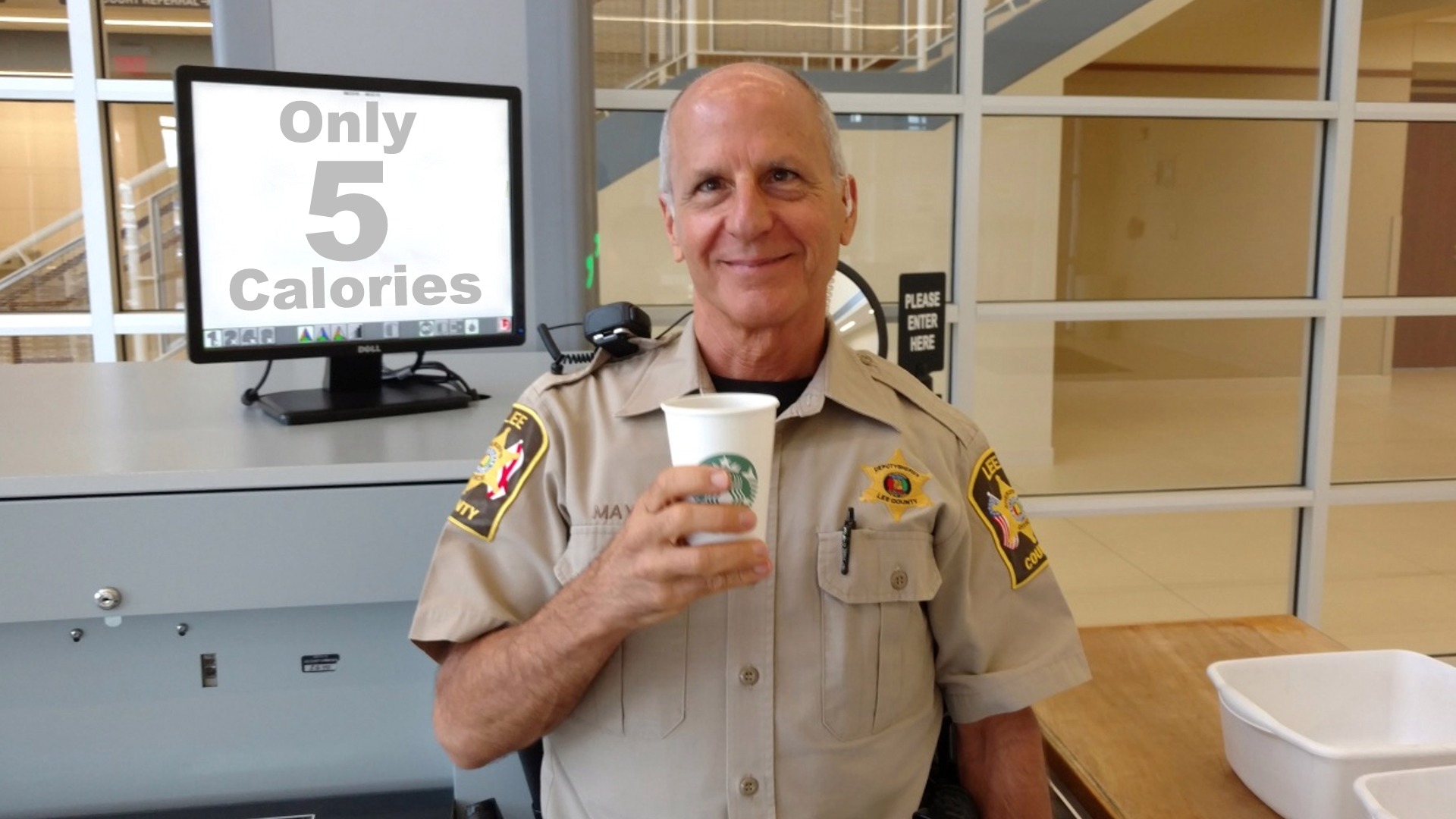
Again, if you are like most Americans, the number one thing that you can do to easily and immediately improve your health and begin to gradually return to a healthy weight is this: Stop drinking your calories and start drinking good water.
Good Water
So, what is “good” water?
For me, the thought of good water evokes images of a pure mountain stream gushing forth from the rocky ground, high above the pollution of civilization; pure, clean, alkaline water full of minerals and free of any impurities. I imagine what Genesis 2:10 describes; “Now a river went out of Eden to water the garden…” Can you imagine drinking from that river? Water, the way God made it in the beginning.
Unfortunately, our current reality is quite different. According to an article on techtimes.com, the purest water on Earth is found in Puerto Williams, a city on the southern tip of Chile, considered the southernmost city in the world. The article goes on to state that of the Earth’s available water, only 0.003 percent is unpolluted.
So, for those of us who don’t live in southern Chile, where do we get “good” water?
Dr. Shinya
Unquestionably, one of the giants in the fields of medicine, health and nutrition, which, by the way, is an exceedingly rare combination these days, is Dr. Hiromi Shinya. Dr. Shinya is a Japanese-born, world-renowned gastroenterologist. He helped invent the colonoscope, and he developed the “Shinya Technique” for the removal of polyps through an endoscopy instead of invasive major abdominal surgery.
Dr. Shinya answers our question in his book The Microbe Factor:
“I define good water as water that has been purified of chemicals like chlorine and other toxins and that has a pH around 8.5. I myself drink Kangen water, but you may choose your own filtered water or mineral water.”
Later in that same book he explains that around 1980 he was part of a group of scientists, engineers and doctors that got together in Japan to discuss what could be done to save their water that had become contaminated by acid rain.
He goes on to say, “Out of that meeting a technique was developed to process water to make it more alkaline. Others went on to build a machine that does this, for people to put in their homes…since that time I have been drinking this alkaline water we call Kangen water.”
The translation of the Japanese word Kangen is “return to origin,” because it returns water to its original state, kind of like that river that went out of Eden. If you add the Japanese symbol for water to it, it can be translated “reduced water.”
The machine that Dr. Shinya referred to is a water ionization system that transforms regular tap water into pure, healthy, hydrogen-rich, electrolyzed reduced water (ERW).
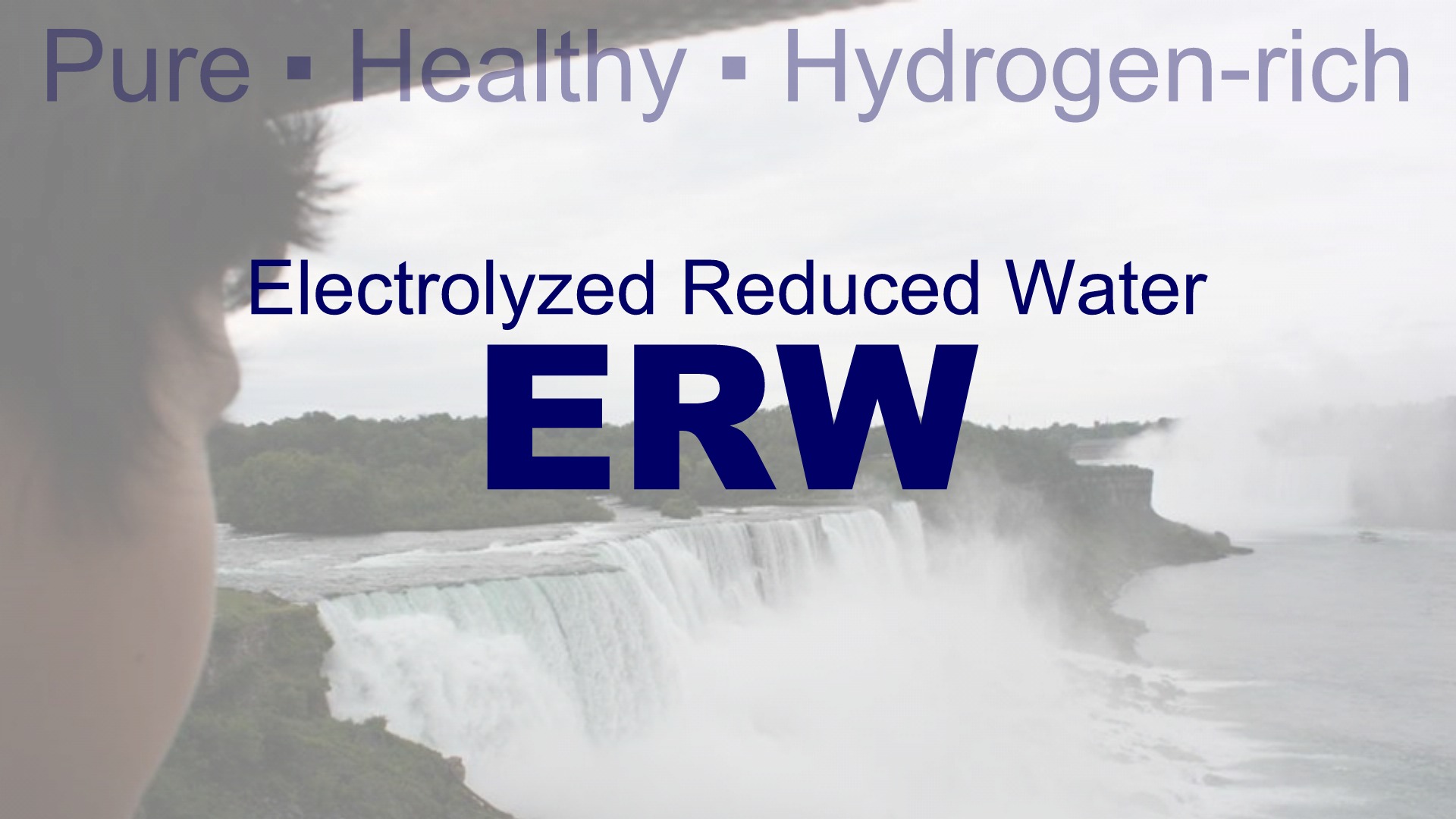
According to a 2016 article in the International Journal of Molecular Sciences, “Electrolyzed Reduced Water (ERW) produced near the cathode during water electrolysis exhibits high pH, high concentration of dissolved hydrogen and an extremely negative redox potential.”
The conclusion of the article states that, “In summary, the H2 dissolved in ERW acts as an antioxidant, neutralizing the free radical. This is very important if we consider that oxidative stress contributes to the development of many inflammatory diseases.”
Options
Personally, I have been drinking Kangen water ever since I learned about it in 2010, and consider it the very best option for “good” water. If you do not have access to ERW, then consider the following options:
• PURE – Drink pure water. If your drinking water comes from a well, have the water tested. If necessary, filter it before drinking. If you are on a municipal water system you almost certainly need to filter it. There are many inexpensive options available including countertop filter systems, water filter pitchers, and even filtering water bottles.
• Say “NO” to RO – I do not recommend Reverse Osmosis (RO) as a filtration process because, while it does remove impurities and contaminants from the water, it also removes all the essential minerals. The result is “dead” water, not “good” water. Many brands of bottled water are filtered by RO.
• Molecular Hydrogen – If possible, consider adding molecular hydrogen to your water. The most powerful aspect of Kangen water is the presence of the dissolved hydrogen. You can buy molecular hydrogen tablets that can be added to your water.
According to the Molecular Hydrogen Institute website, “This biomedical research on hydrogen is still in its infancy with only around 1,000 articles and 1,600 researchers, but these publications and researchers suggest that hydrogen has therapeutic potential in over 170 different human and animal disease models, and in essentially every organ of the human body.”
Bottled Water
There was a special report in the August 2011 edition of Reader’s Digest entitled “Big Gulp.” The introductory paragraph reads, “We have the safest drinking water in the world—except for the pesticides that sometimes sneak in. And the rocket fuel. And the antibiotics…”
The article goes on to say, “Plain water is powerful stuff. Medical experts say getting enough lowers your risk of a number of ailments and unpleasantries.” Then it lists the following: Blood clots; heart disease; kidney stones; cancer; mental fuzziness; crankiness; fatigue; excess weight.
Among others, the article quotes Peter Gleick, PhD, of the Pacific Institute, who says, “Sales of bottled water have skyrocketed from around a gallon per person per year in the early 1970s to over 30 gallons today.” He wrote that in 2011. According to statista.com, by 2017 that number had risen to 42.1 gallons per person per year.
Dr. Gleick gives four main reasons for this dramatic increase: (1) People are afraid of tap water; (2) People don’t like the taste of tap water; (3) It’s become easier to find bottled water and harder to find water fountains; (4) The flood of ad campaigns with promises of making people skinnier, sexier and healthier.
The front flap of the dust cover of his book Bottled and Sold begins like this: “Water went from being a free natural resource to one of the most successful commercial products of the last one hundred years. That’s a big story, and water is big business. Every second of every day in the United States, one thousand people buy a plastic bottle of water, and every second of every day one thousand people throw one of those bottles away.” That was written in 2010. Can you imagine what that number would be today?
Folks, seriously, that’s just too much unnecessary waste. I’m reminded in Genesis 2:15 that God put Adam in the Garden of Eden to tend and keep it not destroy it! This incredible Earth that God created for us is one huge paradise that He allows us all to share and enjoy. I believe He intends for us to be responsible and self-disciplined to do our part to tend and keep it.
The Earth is actually God’s property, and in fact, you and I are, too! Think about Psalm 24:1, “The Earth is the Lord’s, and all its fullness, the world and those who dwell therein.” Let’s do our little part to tend and keep God’s Earth.
Be a Part of the Solution
I strongly encourage you to be an active part of the solution, not the pollution.
• Take whatever steps necessary to transform your well or tap water into good water.
• Purchase safe, reusable water bottles for every member of your family.
• Every day, before leaving home, be sure everyone has a sufficient supply of water to last until they return home.
• Only buy bottled water in emergency situations.
Marshia and I never leave home without our filled water bottles. She drinks from a glass Lifefactory bottle, and carries a half gallon plastic jug for backup. I drink from my plastic Contigo bottle, and carry a Zorri Tritan for backup.

When to Drink
When is the right time to drink water? Here are some general guidelines. Remember that a cup is 8 ounces.
• Drink 2 or 3 cups first thing in the morning, and then wait at least 30 minutes before having your coffee and breakfast.
• Drink 2 or 3 cups at least 30 minutes before you eat lunch.
• Drink 2 or 3 cups at least 30 minutes before you eat supper.
• Wait at least an hour and a half after eating before drinking more water.
• It is best not to drink anything with your meal. If you have to drink something, try to drink a cup of water or less.
• It is best not to guzzle water after supper or if you wake up during the night. Just sip a little to satisfy your immediate thirst.
Once you get in the habit of drinking sufficient water it’s actually quite easy to drink 8 or 10 cups a day.
Salt
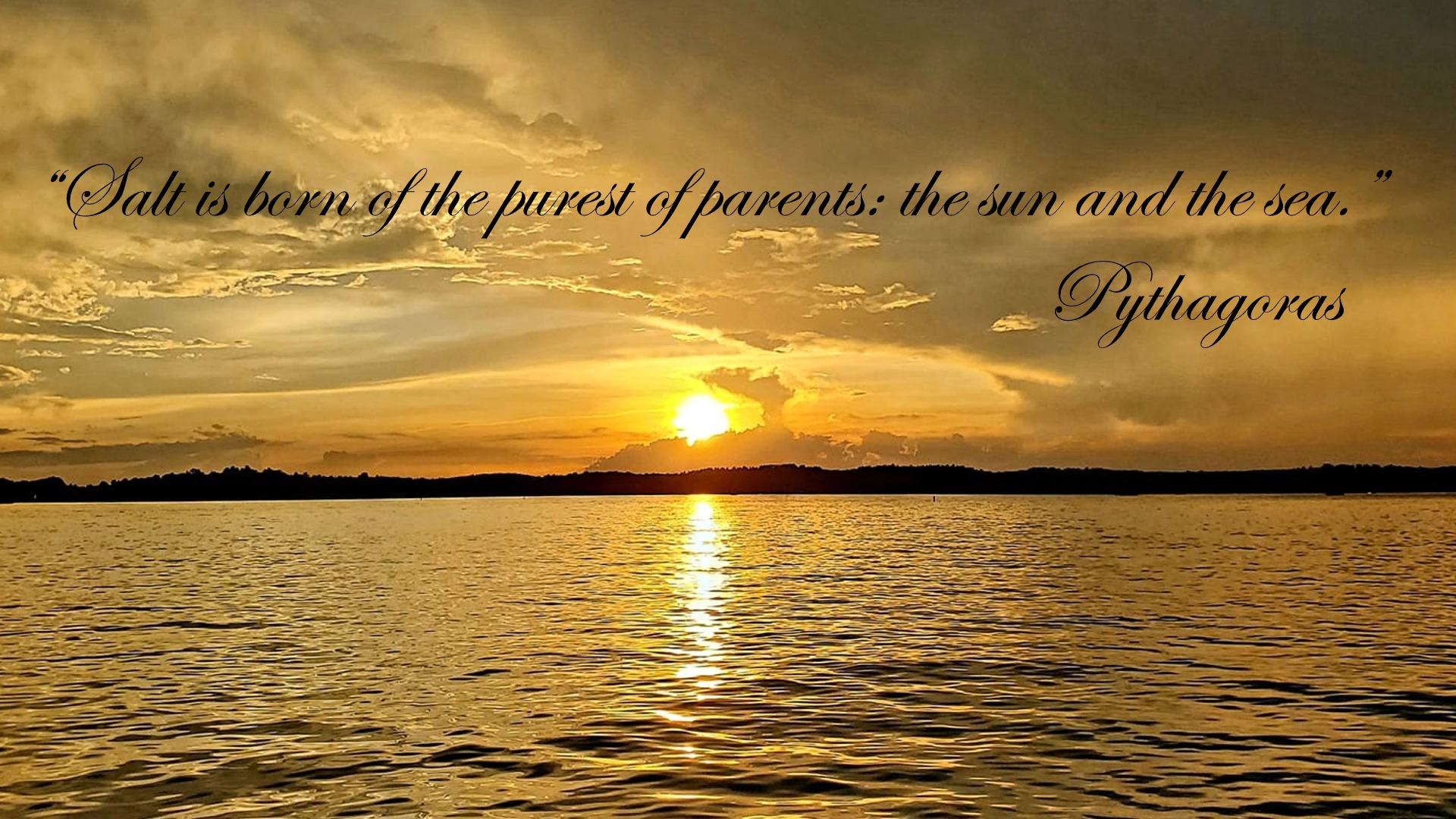
Jesus said in Mark 9:50, “Salt is good, but if the salt loses its flavor, how will you season it? Have salt in yourselves, and have peace with one
another.”
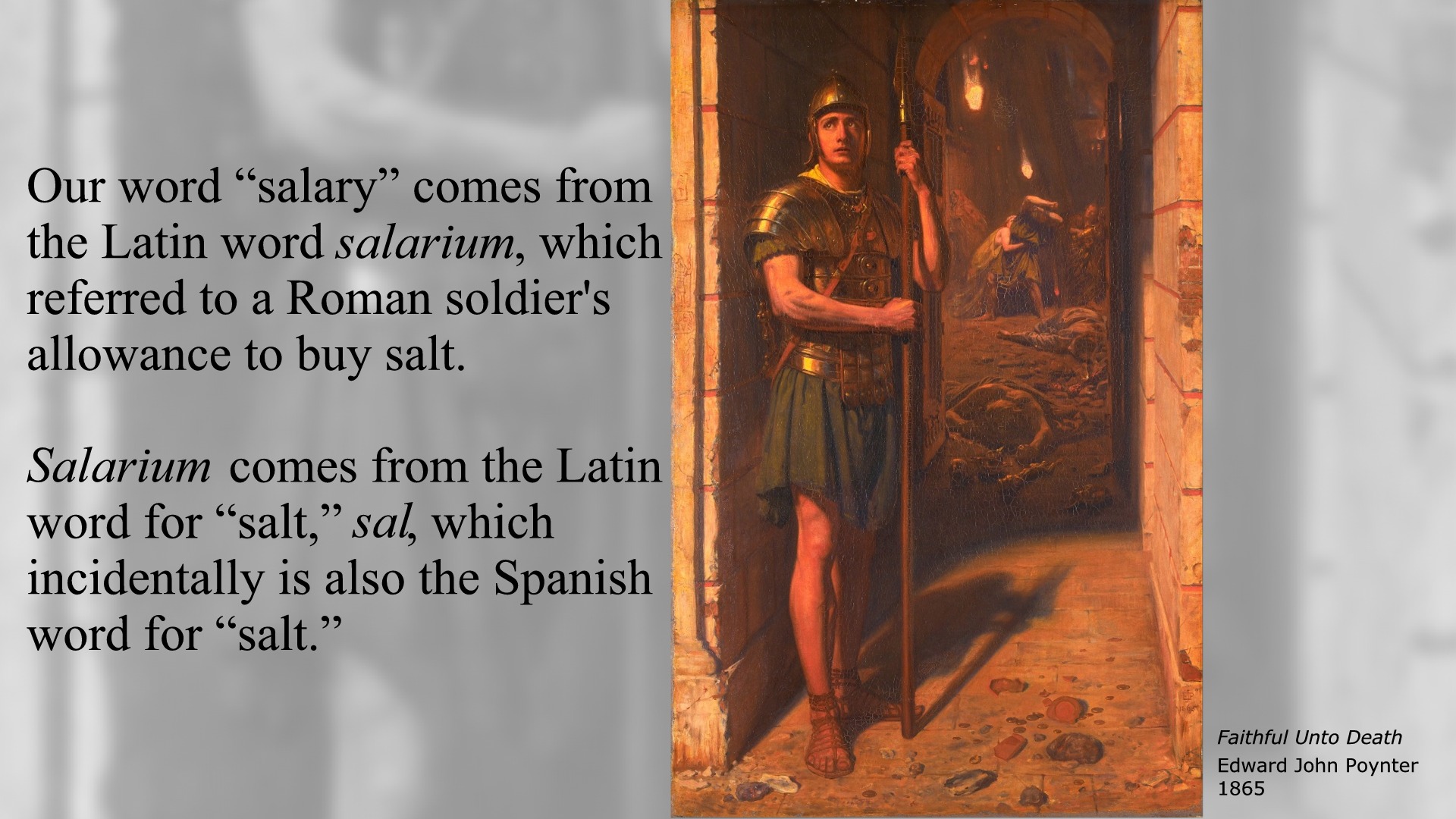
Jesus said salt is good. History tells us that people have been eating salt since the beginning of time. Unfortunately, in our modern, “civilized” era, man has tried to improve on God’s creation. For nearly one hundred years, iodine has been added to table salt in the U.S., and for over a hundred years, anticaking agents have been added. For example, the ingredients in Morton Iodized Salt are: salt, calcium silicate (an anticaking agent), dextrose, potassium iodide.
Dextrose in salt? Really? Even their Iodized Sea Salt contains dextrose.
Now this is just a guess, but I really don’t believe that is the kind of salt that Jesus was referring to when He said that it was good. No, I think He was talking about salt the way He created it, with all of its accompanying minerals.
Unfortunately, the table salt that most people consume today contains only two minerals—sodium and chloride. They call that “refined” salt. The human body requires sodium, but in order to receive the nutritional benefits it must be accompanied by the many other minerals that are present in unrefined salt.
Celtic Sea Salt
According to an article on livestrong.com, “Unlike table salt, Celtic sea salt is not processed mechanically or treated chemically. Celtic sea salt is harvested by hand using wooden tools and then left out in the sun and air to allow the last of the moisture to evaporate. Because it is not processed and because no preservatives are added, Celtic sea salt contains 84 different live elements that are commonly found in sea water…”
Another excellent option is Himalayan Pink Salt, which also contains about 84 minerals and trace elements.
The Minerals Education Coalition offers a poster for sale on their website that’s called “Elements Comprising the Human Body.” According to the poster, “The human body is one of the most complex structures in nature, yet it is made up of those same basic minerals and elements that are our natural resources.” It goes on to say, “Good health depends on supplying your body with these necessary nutrients. Each of these elements fulfills a critical function in your life. Without them, a healthy body could not exist.”
Review
We’ve covered a lot of information in this chapter. Here is a brief review of some of the main points.
• An adequate supply of good water is the foundation of good
health.
• Divide your weight by two, and that is the minimum number of
ounces of water that you should be drinking every day.
• Dr. Batman said, “…a well-regulated and constantly alert
attention to daily water intake will prevent the emergence of most
of the major diseases we have come to fear in our modern society.”
• There is no drink more natural than water, nor is there any drink that hydrates the body better than good water.
• Sugar-sweetened beverages (SSBs) are the single largest source of calories and added sugar in the U.S. diet.
• Many people could immediately begin to lose a pound a week by simply avoiding SSBs.
• Do the best you can with what you’ve got: Convert your well or tap water into good water, get some good reusable bottles and always take good water with you.
• Only buy bottled water in emergency situations.
• Get in the habit of drinking water at the right times.
• Make the switch to Celtic sea salt or Himalayan pink salt.
30-Day Challenge
You may be thinking right about now, “That’s ridiculous! I could never give up my Coke, or Dr. Pepper, or Red Bull, or Frappuccino, or sweet tea…,” or whatever it is that you love. “I could never drink that much plain water in a day.”
If you’re a Christian I have some great news for you—you can do it! Do you remember what the apostle Paul said in Philippians 4:13? “I can do all things through Christ who strengthens me.”
All things! You can do this! Ask God to help you. He will.
1 Corinthians 10:31 says, “Therefore, whether you eat or drink, or whatever you do, do all to the glory of God.”
Do it to the Glory of God
At this point I’m not asking for a lifelong commitment—just 30 days. I challenge you to try it for 30 days, and if you’ll accept the challenge I’ll make you a guarantee. It’s not a Money-Back Guarantee, but what I call a “Health-Back Guarantee.”
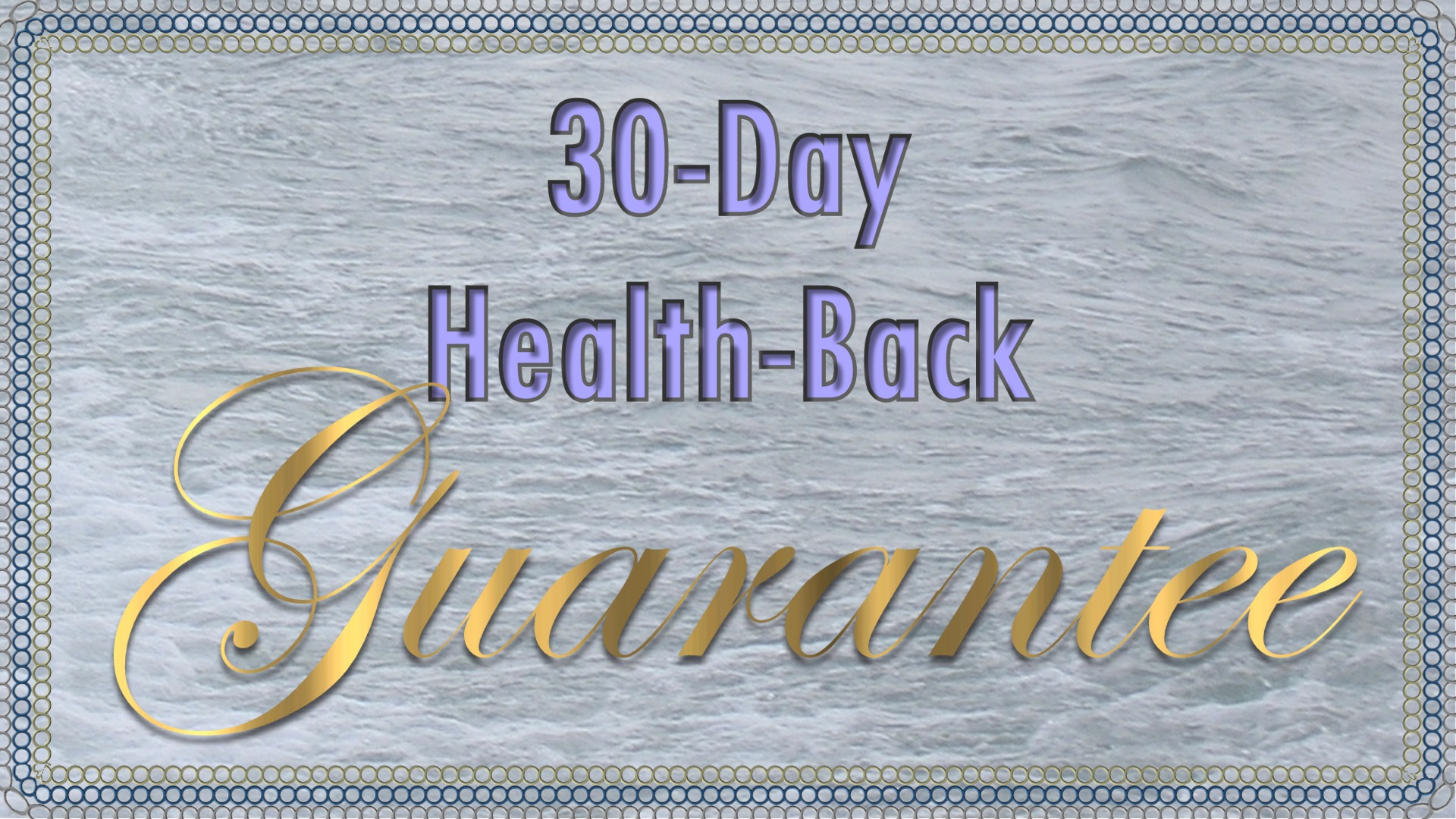
Granted, you may experience headaches and other detox symptoms at first, but if you stick with it, before the 30 days are up you will begin to get your health back, and save some money in the process. You have nothing to lose except a few unwanted pounds.
Next
In this chapter we have talked about what we drink—in the next chapter we will talk about what we think. I will be sharing some life-changing information, and give you some extremely simple tips that will quickly transform your health and weight.
I’ll see you there.
Credits
Scripture
taken from the New King James Version®.
Copyright
© 1982 by Thomas Nelson, Inc.
Used
by permission. All rights reserved.
https://www.usgs.gov/special-topic/water-science-school/science/
water-you-water-and-human-body?qt-science_center_
objects=0#qt-science_center_objects
Batmanghelidj, Fereydoon. Your Body’s Many Cries for Water. Global Health Solutions, Inc., (Second Edition) 1995.
Batmanghelidj, Fereydoon. Obesity, Cancer, Depression: Their Common Cause and Natural Cure. Global Health Solutions, Inc., 2005.
Warren, Rick, Amen, Daniel, Hyman, Mark. The Daniel Plan. Zondervan, 2013.
Wansink, Brian. Mindless Eating. Hay House, 2001.
https://www.starbucks.com/menu/drinks/tea/green-
tea-latte#size=195172&milk=63
https://www.starbucks.com/menu/drinks/frappuccino-blended-
beverages/caramel-ribbon-crunch-frappuccino-blended-beverage
https://www.mcdonalds.com/us/en-us/product/hot-chocolate-small.html
https://www.mcdonalds.com/us/en-us/product/
strawberry-shake-small.html
https://cspinet.org/xtreme-eating-2019
http://www.pepsicobeveragefacts.com/Home/
Product?formula=35005*26*01-01&form=RTD&size=16.9
https://www.hsph.harvard.edu/nutritionsource/
healthy-drinks/sugary-drinks/
https://www.cdc.gov/nutrition/data-statistics/sugar-
sweetened-beverages-intake.html
https://www.coca-colaproductfacts.com/en/
products/coca-cola-zero-sugar/original/12-oz/
https://www.techtimes.com/articles/119774/
20151229/this-is-where-the-worlds-purest-water-can-be-found.htm
Shinya, Hiromi. The Microbe Factor. Council Oak Books, LLC, 2010.
Int. J. Mol. Sci. 2016, 17(9), 1461; https://doi.org/10.3390/ijms17091461
http://www.molecularhydrogeninstitute.com/
hydrogen-an-emerging-medical-gas
“Big Gulp” Reader’s Digest August 2011: 102-113
https://www.statista.com/statistics/183377/per-capita-
consumption-of-bottled-water-in-the-us-since-1999/
Gleick, Peter H. Bottled and Sold. Island Press, 2010.
O’Neill, Barbara. Self Heal by Design. Bang Printing, 2016.
https://www.livestrong.com/article/260852-
health-benefits-of-celtic-sea-salt/
https://mineralseducationcoalition.org/store/
elements-comprising-the-human-body-poster/
|









